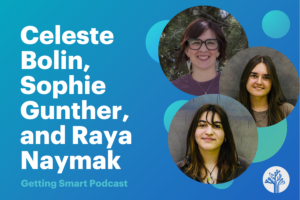Implementation Challenges on the Path to Personalization

Personalized learning means every student has a unique plan, path, and pace. They can learn anyplace and build their own portfolio of personal bests to showcase what they’ve learned. Powered by new tools, personalized learning is boosting engagement, persistence, and achievement.
However, there are several technical challenges to delivering on the promise of personalization including defining a standard student record, boosting interoperability, combining multiple formative sources, estimating comparable individual student growth grates. These challenges are more political than technical, and most simply require sector organizations to forge agreements.
More daunting than the technical challenge are seven implementation barriers.
1. Policy. Privacy policies under consideration in congress and in numerous states threaten to stall personalization by restricting parent, teacher, vendor, and researcher access to student learning data. Embracing personalization and privacy policymakers can strike the right balance. Parent-managed learner profiles will be part of the solution.
2. Leadership. There are thousands of chief academic officers (CAOs) that just figured out how to build and manage instruction regimes. Now they’re trying to pivot to personalized learning. This change reflects a dramatic change in the mental model of senior district officials in terms of how they understand systems, what they look for in classrooms, and how they organize roles and goals of staff members. (In March, we suggested 10 elements of comprehensive solution.)
3. School models. Schools are organized around age-based cohorts. Teachers do their best to differentiate across big skill differences but real personalization requires an individual path and pace and that’s hard to do in traditional schools. Competency-based schools ask students to show what they know and allow them to progress based upon demonstrated mastery. (New models are discussed extensively at CompetencyWorks.)
4. Assessment. Personalized learning is guided by quality formative assessment, and is often built into authentic learning experiences. Adaptive assessments provide useful guidance for other experiences. Projects can be personalized for students interests and learning levels, but it takes skillful adjustment of scoring rubrics. Combining multiple formative assessments to help a student customize their own path remains more challenging than it should be. (See Formative Assessment: Progress, Barriers and Opportunity.
5. Adoption. Schools will need to invest in systems that collect necessary information. Teachers will need to commit to using the information to personalize learning. Parents will need to download information and manage access to learner profiles. Each of these groups will require adequate incentives and supports to promote continued and effective use.
6. Student use. Online profile management is becoming important in every aspect of life, it’s a new digital literacy competency that every young person must learn to exercise. Encouraging and supporting widespread student use of portfolios will be key to effective implementation. (See Every Student Should Have A Digital Portfolio.
7. Disconnected parents. As the number of learning options expands many students and families would benefit from a chosen guide. The Donnell Kay Foundation imagines a new system of education where learners create customized paths with advocates who work with them to connect their present learning to their desired future. This role of mentor-advocate could benefit all students but particularly students without the benefit of engaged parents. In some cases, parents/guardians will choose to allow designees (e.g., mentors, relatives) to manage learner profile privacy settings. Young people in the foster care and juvenile justice system may have a court (or state) appointed guide that would manage privacy settings.
Despite technical and implementation challenges, the path to personalization offers tremendous opportunity to boost achievement for both accelerated and struggling learners.
For more see:
- Personalization + Privacy = Data Backpack
- Parent-Managed Learner Profiles Will Power Personalization
- It’s Time For Students To Own The Student Record: B2C LMS Companion
- Path To Personalization: Better Models & Better Tests
- Teachers Deserve Better Tools for Tracking Subskills
- The Opportunity for States to Provide Secure Data Access to Parents & Educators
This post is a part of a Student Data Backpack blog series in the upcoming “Getting Smart on Personalization and Privacy” Smart Bundle produced in partnership with the Foundation for Excellence in Education’s Digital Learning Now initiative (@DigLearningNow) and the Data Quality Campaign (@EdDataCampaign). Join the conversation on Twitter using #EdData.







0 Comments
Leave a Comment
Your email address will not be published. All fields are required.